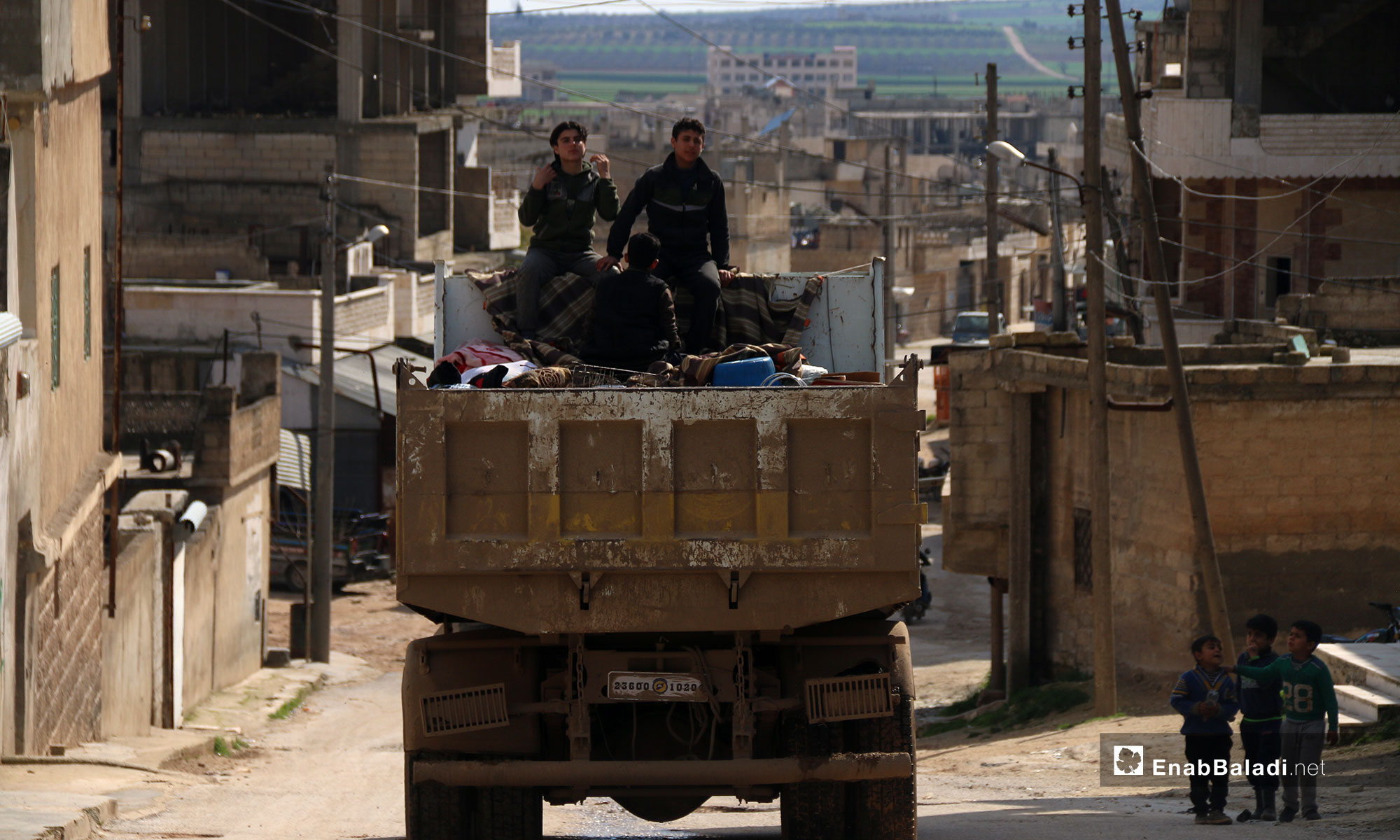



Every time Idlib governorate records a new wave of displacement, the house rents increase, with them the burdens of the forcibly displaced persons, given the overpopulation witnessed by the governorate, where the number of its residents is about 4 million persons, according to statistics issued by the Response Coordinators Team.
Today, the governorate of Idlib is witnessing a wave of displacement from the demilitarized zone itself, located between Idlib and Hama, being a target for constant shelling though the Shochi deal, signed by Turkey and Russia in September 2018, is yet active.
Mrs. Riham, a woman displaced from the town of Qamhana, rural Hama, narrated the details of her suffering, as she is forced to keep moving and searching for a house to accommodate her and her family.
“The first house we lived in was in Kafr Nabl, southern Idlib. A few years ago, when we were displaced. The rent was little. However, after the truce and the ceasefire deal, rents started to increase insanely,” she said.
She added: “We were forced to change tow houses in tow months because the owners asked for rent increase.”
Mrs. Marwa Taleb’s complaint crosses with that of Riham, for she rented her house in Idlib in return for 20 thousand Syrian pounds three years ago, with a commission of the same value given to the broker. But with the rents soaring, she was forced to move to Maarrat Misrin, where she rented a house for 50 thousand Syrian pounds a month.
The rents do not seem massive if compared to the value of the Syrian pound, for a dollar equals 500 Syrian pounds. Nonetheless, the majority of the area’s people are living below poverty line, knowing that 80% of Syrian people are under the poverty line, according to the Statistics issued by UN on March 1, 2019.
In search of the causes behind the phenomenon, exhausting the displaced persons, Enab Baladi visited several real-estate offices in southern Idlib.
Raed al-Khatib, the owner of a real-estate office in the city of Kafr Nabl, told Enab Baladi: “The rents are on the rise in general, particularly in the safe areas, because they are witnessing high levels of displacement.”
“The huge influx of internally displaced persons triggered a number of house owners to ask for high rents, which sometimes reach a $100 a month. In return, the tenant is forced to pay, given the scarcity of houses and the increasing demand on them,” he added.
Concerning the commission, al-Khatib said: “A number of real-estate offices ask the tenants to pay a commission for the intermediary, 6 thousand Syrian pounds at times. The house owner is, however, asked to pay half of the rent, one time at signing the contract.”
Lacking censorship, in charge of defining the rents, solutions to overcome the phenomenon also lack.
Engineer Fadi al-Khatib, director of the Technical Office of the Kafr Nabel’s Local Council, told Enab Baladi: “The real-estate is a sensitive and complicated issue, and no contracts must be signed unless it is through the local council as to guarantee the rights of both parties, the tenant and the real-estate owner.”
In Northern Syria, the suffering of the displaced persons doubled after the military escalation on the part of the Assad’s forces, targeting the demilitarized zone, agreed upon by Turkey and Russia, causing the death of dozens of civilians and triggering a massive wave of displacement.
In a statement published on Saturday, March 2, the Response Coordinators Team documented the displacement of more than 13 thousand families from the demilitarized zone due to the ongoing attacks on it, saying that more than 65 thousand persons are spreading in 119 towns and camps, who have left their villages and towns in the area.
According to the team’s statistics, composed of the organizations operating in Idlib governorate, northern Syria, the population in the village from where the people have been displaced so far is about 119722 thousand persons.
The team explained that concerns heighten with the increasing numbers of the people displaced from the demilitarized zone, which covers more than 212 villages and towns and is a house to about 557817 thousand persons, given that there is a potential to expand the frame of the areas targeted to include those adjacent to the zone, the population of which consists of more than 425 thousand persons.
if you think the article contain wrong information or you have additional details Send Correction